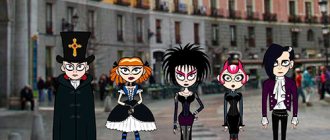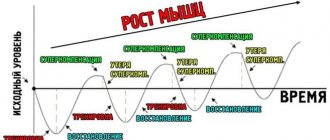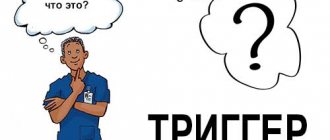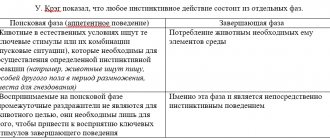At all times, people have united into separate groups with common hobbies and interests. Often their views went beyond traditional social norms.
Mass culture focuses on the majority and satisfies the most popular needs. Subcultures have become an outlet for people who do not share generally accepted paradigms.
History and modernity
In the middle of the 20th century, the first informal youth associations appeared, based on musical preferences. The development of rock and roll, its new directions led to the emergence of such types of subcultures as beatniks, hippies, rockers, punks, goths and others. In one form or another, these movements have retained their relevance.
In the 21st century, the basis of informal movements is not only musical tastes, but also various types of art, sports hobbies, and Internet culture.
If several decades ago belonging to one single movement was unambiguous, now fragmentary entry into one or another informal society does not cause rejection and conflicts among young people.
Among modern types of subcultures, the following areas are distinguished:
- musical;
- sports;
- art;
- industrial;
- Internet cultural.
The essence of the term
Subculture
is a concept derived from the Latin words “sub” (under) and “cultura” (culture), and is used in sociology and cultural studies. We are talking about a part of society that differs from the overwhelming majority in its worldview and behavior. Carriers of subcultures may differ from other people in their value system, appearance and other aspects.
Youth subcultures have several varieties and are formed on demographic, national, geographical, professional and other bases.
Most often, one or another subculture “marks” its adherents with certain patterns of behavior, features of appearance (clothing, hairstyles), vocabulary and other distinctive characteristics.
Art subculture
Art subculture refers to informal movements associated with creative self-expression and hobbies. This includes graffiti, underground art, role-playing games, and anime.
Graffiti is the most recognizable type of art subculture. It refers to inscriptions and drawings on the walls of buildings, entrances, and metro stations. The modern graffiti movement originated in New York.
Many street artists in their works reflect sensitive social or political issues, some create real masterpieces on the walls of houses, and 3D paintings on city streets, popular in recent years, amaze with their realism.
Graffiti as a type of subculture is quite popular among Russian youth. In the mid-2000s, an international festival of this direction was held in St. Petersburg.
Recommendations
Quotes
- “What is a subculture? — theories, definitions and examples — video and transcript of the lesson.” Study.com. Retrieved 2017-09-08.
- Yockey, Steve (2010). Subculture
. Samuel French. ISBN 978-0-573-69798-2. OCLC 555690341. - https://oxforddoxaries.com/us/definition/american_english/subculture
- Middleton 1990
- Hebdige, Dick (1979). "Subculture: The Meaning of Style" (PDF).
- Thornton 1995
- ^ a b
Gelder 2007 - Okay, Gary Alan; Kleinman, Cheryl (1979). "Rethinking Subculture: An Interactionist Analysis." American Journal of Sociology
.
85
(1):1–20. Doi:10.1086/226971. ISSN 0002-9602. JSTOR 2778065. S2CID 144955053. - Berzano L., Genova S., Lifestyle and subcultures. History and New Perspective, Routledge, London, 2015 (Part II)
- Nwalozi, Chijioke J. (2015). "Rethinking Subcultures and Subculture Theory in Youth Crime Research _ A Theoretical Discourse" (PDF).
- Newburn, T. & Proquest, 2022. Criminology Third., Ann Arbor, Mich.]: ProQuest. p.210
- Dellwing, M.; Kotarba, J.; Pino, N. (10/22/2014). The Death and Resurrection of Deviance: Contemporary Ideas and Research
. Springer. ISBN 9781137303806. - Hebdige 1981
- Anheier, Helmut K., Stefan Toepler and Regina List, eds., International Encyclopedia of Civil Society
, (Springer, 2010) - ^ a b
Hall, Stewart, Tony Jefferson, Resistance through Ritual: Youth Subcultures in Post-War Britain (Routledge, 1993). - House, David. Cross-cultural consumption: global markets, local realities.
New York: Routledge, 1996. Print. - Goldstein-Gidoni, Ofra. "In Israel: Cultural Appropriation
in a Non-Colonial Context."
Ethnos: A Journal of Anthropology
68.3 (2003): 365. Print. - Blair, M. Elizabeth, "Youth Commercialization of Rap Music" Subculture
. "Journal of Popular Culture 27.3 (1993): 21-33. Print. - Levine, Philip, J. Patrick Williams. "Rethinking Punk Through Ideology
and Authenticity".
Conference Proceedings - American Sociological Association
. 2007 Annual Meeting, 2007 - Dick Hebdizh p.106-12
- Frehse, Fraya (February 2006). "As realidades que as 'tribos urbanas' criam" [Realities that create "urban tribes"]. Revista Brasileira de Ciências Sociais
(in Portuguese).
21
(60). Doi:10.1590/S0102-69092006000100012. - Maffesoli, Michel (1996-02-27). Tribal Time: The Decline of Individualism in Mass Society
. ISBN 080398474X. - "'The Thriving of Urban Tribes in Modern Society'." Retrieved 2017-09-08.
- Maffesoli 1996
- Watters 2003
- ^ a b
Jaime Hovey,
Sexual subcultures
entry in F. Malti-Douglas,
Encyclopedia of Sex and Gender
, Vol. 4, Gale, 2007, pp. 1372-1373. - ^ a b
Jaime Hovey,
Sexual subcultures
entry in F. Malti-Douglas,
Encyclopedia of Sex and Gender
, Vol. 4, Gale, 2007, p. 1374 - Laurent Francois @lilzeon (05.25.2013). "Subcultures: The Big Opportunity for Social Brands to Create Value." Social networks today. Retrieved 2017-10-19.
- Subcultures and social networks: differentiation of masses
- 'Attacks on goths, punks and emos are hate crimes.' Channel 4 News
. April 4, 2013. Retrieved June 24, 2022. - Sedgwick, Mark (4 April 2013). “How are goths and emos defined?” BBC News
. Retrieved June 24, 2022.
Sources
- Kante, Richard K. (March 2009). Gays and the Forms of Contemporary American Culture
. London, England: Ashgate Publishing. ISBN 978-0-7546-7230-2. - Gelder, Ken (2007). Subcultures: Cultural History and Social Practice
(Routledge, March 2007; paperback ISBN 0-415-37952-0) - Hebdige, Dick (1979). Subculture: The Meaning of Style
(Routledge, March 10, 1981; paperback ISBN 0-415-03949-5).
Quoted in Negus, Keith (1996). Popular Music in Theory: An Introduction
. Wesleyan University Press. ISBN 0-8195-6310-2. - Huq, Rupa (2006) "Beyond Subculture" (Routledge, 2006; paperback ISBN 0-415-27815-5. Hardcover ISBN 0-415-27814-7)
- Maffesoli, Michel (1996). Tribal Time: The Decline of Individualism in Mass Society
. (London: Sage Publications. ISBN 0-8039-8474-X) - Mackay, George (1996) Meaningless Acts of Beauty: Cultures of Resistance Since the Sixties
. (London: Verso. ISBN 1-85984-028-0.) - Mackay, George (2005) Circular Breathing: The Cultural Politics of Jazz in Britain.
Durham, NC: Duke University Press. ISBN 0-8223-3573-5. - Riesman, David (1950). "Listening to Popular Music", American Quarterly
, 2, p.
359-71. Cited in Middleton, Richard (1990/2002). Studies in Popular Music
, para. 155. Philadelphia: Open University Press. ISBN 0-335-15275-9. - Thornton, Sarah (1995). Club Cultures: Music, Media and Subcultural Capital
.
Cambridge: Polity Press. Quoted in Negus, Keith (1996). Popular Music in Theory: An Introduction
. Wesleyan University Press. ISBN 0-8195-6310-2. - Watters, Ethan (2003). Urban Tribes: A Generation Redefines Friendship, Family, and Commitment
. ISBN 1-58234-264-4. - Hall, Stewart, Tony Jefferson (1993). Resistance through ritual: youth subcultures in post-war Britain
. Routledge, 1993. - Blair, M. Elizabeth (December 1993). "Commercialization of the youth subculture of rap music." Magazine of Popular Culture
.
27
(3): 21–33. Doi:10.1111/j.0022-3840.1993.00021.x. ProQuest 195356599. - Goldstein-Gidoni, Ofra. "In Israel: Cultural Appropriation
in a Non-Colonial Context."
Ethnos: A Journal of Anthropology
68.3 (2003): 365. Print. - Levine, Philip, J. Patrick Williams. "Rethinking Punk Through Ideology
and Authenticity".
Conference Proceedings - American Sociological Association
. Proceedings of the 2007 conference, 2007. - House, David. Cross-cultural consumption: Global markets, local realities
. New York: Routledge, 1996. Print. - Okay, Gary Alan; Kleinman, Cheryl (July 1979). "Rethinking Subculture: An Interactionist Analysis." American Journal of Sociology
.
85
(1):1–20. Doi:10.1086/226971. S2CID 144955053. - Francois, L. (25 May 2013). Subcultures: The Big Opportunity for Social Brands to Create Value. Retrieved November 24, 2014, from https://www.socialmediatoday.com/content/subcultures-big-opportunity-social-brands-generate-value
- Huntington, S. (24 March 2014). Subcultures and social networks: mass differentiation. Retrieved November 24, 2014, from https://socialmediadata.com/subcultures-and-social-media-mass-differentiation/
- Robards, Brady; Bennett, Andy (1 April 2011). "MyTribe: Post-Subcultural Expressions of Belonging on Social Networking Sites." Sociology
.
45
(2):303–317. Doi:10.1177/0038038510394025. HDL:10072/39970. S2CID 146711846. - Belyaev, I. A. Culture, subculture, counterculture / I. A. Belyaev, N. A. Belyaeva // Spirituality and statehood. Collection of scientific articles. Issue 3; edited by I. A. Belyaeva. - Orenburg: Branch of Ural State Civil Aviation Service in Almaty. Orenburg, 2002. - pp. 5-18.
- Berzano, L., Genova, C. (2015). Lifestyle and subcultures. History and new perspective. New York, New York: Routledge.
Roleplayers are inhabitants of two worlds
Role-players or historical reenactors are another direction of the art subculture.
The role-playing movement is based on a passion for fantasy or history. Each participant in the role-playing game transforms into a specific character and acts according to the script. The game can be based on both historical events and plots of works in the fantasy style.
Participants try to replicate living conditions, costumes, crafts, and battles of a particular era as faithfully as possible. Vikings, Ancient Rus' or medieval knightly battles are popular among roleplayers.
A separate direction of the role-playing movement are Tolkienists - fans of J.R. Tolkien. Participants in this subculture transform into characters from his books: elves, orcs, gnomes, hobbits, acting out scenes from the universe invented by the writer.
In ordinary life, participants in the role-playing movement may not stand out from the crowd, but many prefer unusual jewelry and clothes that are stylistically close to the character’s costumes; many create accounts on social networks on behalf of their hero.
Role-playing games are a form of escapism, a way to escape reality. For some it is a break from the daily routine, for others it is an alternative and more preferable reality. Among role-players you can meet both teenagers and older people.
Anime fans and cosplayers
Another type of youth subculture is otaku. It is based on a love of Japanese animation and manga (Japanese comics). Participants in this movement not only passively watch cartoons, but also create their own, organize festivals and cosplay competitions.
Cosplay is the act of impersonating a specific character from an anime, manga, film or computer game. This is not only an authentic costume and hairstyle; many people use art makeup to achieve a complete resemblance to the chosen hero.
Representatives of this type of subculture can be recognized by their bright hair and paraphernalia with their favorite characters. But again, not everyone copies the appearance of their favorite heroes in everyday life.
The otaku movement in Russia is characterized by specific slang based on the use of Japanese words. These can be both common phrases - “arigato” - “thank you”, “sayonara” - “goodbye”, and specific ones: “kawaii” - “cute”, “adorable”, or “nya” - expressing a huge range of emotions.
The age composition of anime fans is diverse - these include 15-year-old teenagers and people 20-30 years old.
Urban tribes
"Urban tribe" redirects here. For the electronic musician, see Urban Tribe.
In 1985, French sociologist Michel Maffesoli coined the term urban tribe
.
It became widespread after the publication of his Le temps des tribus: le déclin de l'individualisme dans les sociétés postmodernes
(1988).[21]
Eight years later this book was published in the United Kingdom as Tribal Time: The Decline of Individualism in Mass Society
.[22]
According to Maffesoli, urban tribes are micro-groups of people who share common interests in urban areas. Members of these relatively small groups tend to have similar worldviews, clothing styles, and behavior patterns.[23] Their social interactions are largely informal and emotionally charged, distinct from late capitalism's corporate-bourgeoisie cultures, which are based on dispassionate logic. Maffesoli argues that punks are a typical example of an "urban tribe".[24]
Five years after the first English translation of Le temps des tribus
, writer Ethan Watters claims to have coined the same neologism in
a New York Times Magazine
article.
This idea was later developed in his book. Urban Tribes: A Generation Redefines Friendship, Family, and Commitment
. According to Watters, urban tribes are groups of never-married people between the ages of 25 and 45 who gather in groups of common interests and enjoy an urban lifestyle that offers an alternative to traditional family designs.[25]
Musical subcultures
In the concept of subculture, types are inextricably linked with the development of musical genres. The first musical movement is considered to be rock and roll fans of the 50s of the 20th century - rockabilly. Bright and daring, they challenged social norms, winning their right to self-expression.
With the development of rock music in the 60s, hippies appeared, advocating a world without wars, for love of nature and harmony with it. “Flower children” preferred to live in communes, wore long hair, indulged in soft drugs and studied Eastern philosophy. Self-knowledge and the discovery of one's mental abilities, love of nature and non-violence form the basis of the hippie subculture.
In the 70s, a variety of rock music genres gave the world punks and metalheads. In the 80s, the goths appeared. In the 90s of the 20th century, the development of electronic music led to the emergence of ravers.
What various musical subcultures have in common is a love for a particular genre, an appearance that copies popular musicians, and the philosophy and values inherent in a particular genre of music.
Punks are anarchists who challenge social norms
In the mid-70s of the 20th century, the punk movement was born. Its participants opposed themselves to society and expressed dissatisfaction with the political system.
The flagships of punk rock are the Sex Pistols, The Stooges (Iggy Pop), Ramones. The music is characterized by dirty guitar sound, provocative lyrics and outrageous behavior of the musicians on stage, bordering on and even beyond the bounds of decency.
Iggy Pop, one of the brightest representatives of the punk scene, largely laid down the behavior of the musicians of this genre.
Punk as a subculture declares complete personal freedom, rejection of generally accepted rules, the desire to rely on one’s own strengths and not be influenced.
Nihilism, nonconformism and outrageousness are the traits that define representatives of the punk movement.
You can recognize a punk by torn jeans, an abundance of metal jewelry, pins, rivets, chains, brightly colored hair, a mohawk or shaved temples, and a leather biker jacket.
Despite the fact that the punk movement originated in the distant 70s, it remains relevant in modern realities. A protest against social injustice, a call for personal freedom - this is what makes punk popular among young people.
Relationship with mainstream culture
Potato chip bags with hip-hop subcultural design in the case of commercial cultural fusion
Identifying specific subcultures can be difficult because their style (especially clothing and music) may be adopted by popular culture for commercial purposes. Companies often seek to capitalize on the subversive appeal of subcultures in search of Cool
, which remains valuable when any product is sold.[16] This process of cultural appropriation can often lead to the death or development of a subculture as its members adopt new styles that seem alien to the mainstream society.[17]
Musical subcultures are particularly vulnerable to this process; what may be considered a subculture at some point in its history—for example, jazz, goth, punk, hip-hop, and rave culture—may represent mainstream taste in a short period of time.[18] Some subcultures reject or modify the importance of style, emphasizing membership through the adoption of ideologies that may be much more resistant to commercial exploitation.[19] The punk subculture's distinctive (and initially shocking) style of clothing was adopted by mass-market fashion companies as soon as the subculture became a subject of media interest. Dick Hebdige argues that the punk subculture adheres to the same "radical aesthetic practices" as Dada and surrealism:
Like Duchamp's "ready-made objects"—manufactured objects that qualify as art because he named them as such—the most unremarkable and inappropriate objects—a pin, a plastic clothespin, a television component, a razor blade, a tampon—could be brought. within the field of punk (un)fashion... Objects borrowed from the dirtiest contexts found their place in punk ensembles; Toilet chains were draped in graceful arcs on chests in plastic trash containers. Safety pins were torn from their everyday "official" context and worn as hideous jewelry across the cheek, ear or lip... fragments of the school uniform (white brie nylon shirts, school ties) were symbolically desecrated (shirts were covered in graffiti). , or fake blood; ties are left undone) and layered over leather drains or shocking pink mohair tops.[20]
Gothic – aestheticization of death
In the 80s of the 20th century, on the wave of post-punk, a new musical direction appeared - gothic rock. It gives rise to a new type of subculture.
Goths do not protest so vehemently against social injustice; they move away from an imperfect world, plunging into mystical romance and the aestheticization of death. They can be compared with adherents of the decadence of the literary and artistic movement at the turn of the 19th-20th centuries.
Melancholic, dressed, as a rule, in all black, Goths see beauty where ordinary people do not notice it. Cemeteries and ancient cathedrals, grotesque graphics filled with mystical meaning, poems glorifying decline, thrillers and horror films are an incomplete list of hobbies of representatives of this type of subculture.
Goths are distinguished by their refined taste and high level of aesthetic needs. They can be called rock music snobs.
Black clothing of the Victorian era or more modern looks made of latex and leather, makeup, the basis of which is a bleached face, on which black-painted eyes and lips stand out, are the hallmarks of the goth.
Gothic rock underwent changes, branching into several directions, and the entire subculture changed and expanded along with the musical genre. From the classic The Sisters Of Mercy, Bauhaus, The Cure to London After Midnight, Dead Can Dance, Clan of Xymox, Lacrimosa.
In countries such as Great Britain, Germany, the USA, and Latin America, gothic has remained popular for several decades; in Russia, the peak of popularity of this subculture occurred in 2007-2012.
Types of subcultures
The list of subcultures has several types:
According to musical preferences
Representatives of individual subcultures often prefer different music. Goths like gothic metal, metallists like heavy metal and its types, punks like punk rock, rastafarians like reggae, emo likes post-hardcore and so on.
Sports subcultures
One of the most famous sports subcultures is parkour. The term denotes the masterly art of moving and avoiding obstacles in space. The key idea of parkour: “there are no boundaries, there are only obstacles.” Parkour became especially popular after the release of the films “The Thirteenth District” and “Yamakashi”.
Football fans are also considered a special sports subculture. They became a more organized group at the turn of the 70-80s of the twentieth century.
By style
Among the subcultures that stand out in style are usually noted: Visual kei, military, teddy boys, cyber goths, mods, dudes, freaks. All of them have their own distinctive features in the image.
According to public beliefs
The list of subcultures also includes those that stand out based on their social beliefs: beatniks, SHARP skinheads, RASH skinheads, straight edgers, anarcho-punks, yuppies, informals, new age, happy people.
By hobby
People who are united by a common specific hobby and accompanying paraphernalia also consider themselves to be one of the subcultures. We can talk about the following communities: bikers, reenactors, gamers, b-boys, role-players, and so on.
By hooligan behavior
The greatest fears among ordinary citizens are representatives of precisely these subcultures, similar in their hooligan and defiant behavior: ultras, highly organized lyubers, ore boys, football brawlers, and gopniks.
According to other signs
There are many youth subcultures united by other hobbies. Among them are otaku - people who adore and are well versed in anime and various manga. Also quite remarkable are furries who are fans of anthropomorphic creatures and consider themselves part of the furry fandom.
Industrial subcultures
Industrial subculture, its types and their characteristics are discussed below.
Industrial subcultures include:
- diggers;
- stalkers.
Diggers are explorers of underground military or civil structures, abandoned or active. These can be either bomb shelters or abandoned bunkers inaccessible to metro station passengers.
This subculture is characterized by its own slang, which will be difficult for the uninitiated to understand.
Stalkers prefer to explore all sorts of abandoned objects, both civilian and military, and ghost towns. The object of their interest may also be existing industrial zones that are closed to citizens.
Stalkers are attracted to industrial landscapes and the special atmosphere of abandoned buildings. Many people combine their passion for stalking with photography or graphic art.
Representatives of this subculture are particularly secretive; most do not advertise the exact coordinates of the objects they visit, and try not to post personal photos of objects on the Internet.
Internet subculture
The spread of the Internet has led to the emergence of such subcultures as “bastards” and the blogosphere.
The emergence of such an Internet phenomenon as “bastards” is associated with the site “Udaff.ru”. It was its founder who first began to promote communication on the Internet using specially distorted, misspelled words. Expressions such as “aptar zhot” quickly spread throughout the Runet.
“Bastards” are characterized not only by violating the norms of the Russian language, but also by a particularly cynical attitude towards everything that happens, ridiculing and devaluing even significant events.
The blogosphere as a direction of Internet subculture brings together people running various blogs. These can be YouTube channels, LiveJournal diaries, and partly public pages and communities on social networks. Bloggers cover a variety of topics: some cover the latest in cinema, music, literature, some write about politics, some write a beauty blog.











